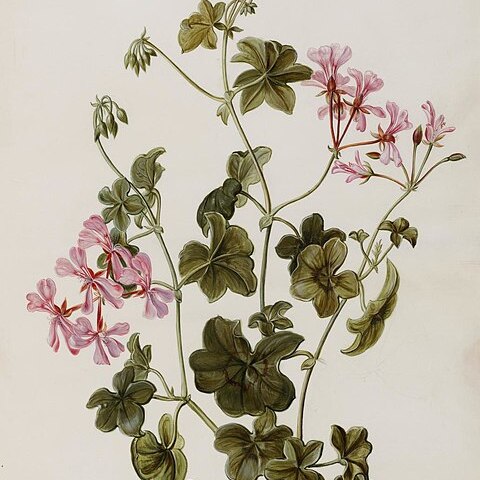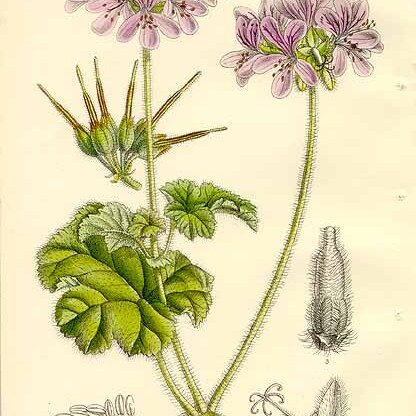Fls irregular; sepals 5, uppermost spurred, the spur adnate to pedicel; petals 5, sts aborted, upper pair different from rest. Stamens 10, 5-7 developed, the rest rud. Ovary 5-celled, beaked; styles 5, short; ovules 2 per cell; carpels rolling up elastically to apex of beak. Seeds 1 per carpel. Herbs, subshrubs, or shrubs with us. opp., stipulate lvs. A genus of some 300 spp., mainly of S. Africa.
Annual or perennial herbs, shrublets or shrubs, sometimes with underground tubers; erect or decumbent, sometimes acaulescent or with subsucculent stems; often viscid and aromatic, variously hairy, often glandular.
Leaves usually petiolate, stipulate, opposite or alternate, serrate, crenate, dentate, lobed, variously dissected or compound, rarely entire; stipules membranous, sometimes setaceous, rarely forming spines.
Fruit a rostrate schizocarp; mericarps rostrate, 1-seeded, tapering from the apex to the base and ending in a point, hirsute; rostrum persistent, helically twisting when ripe, plumose on the inside.
Sepals imbricate, often with a membranous margin, posterior sepal produced at the base into a spur which is decurrent along the pedicel and adnate to it.
Ovary 5-lobed, 5-locular (rarely 3–4-locular by abortion), rostrate; loculi 2-ovulate; style present, short or long; stigmas 5, usually filiform.
Stamens 10, connate at the base; 2–7 filaments bearing anthers, the remaining ones often vestigial (staminodes); anthers dorsifixed.
Petals 5 (rarely 0–4 by abortion), usually unequal, imbricate, unguiculate or sessile.
Inflorescence a 2-many-flowered pseudumbel (flowers rarely solitary); bracts present.
Seeds ± oblong-obovoid; endosperm absent; embryo curved.
Disk or extra-staminal glands absent.
Flowers zygomorphic, 5-merous.



